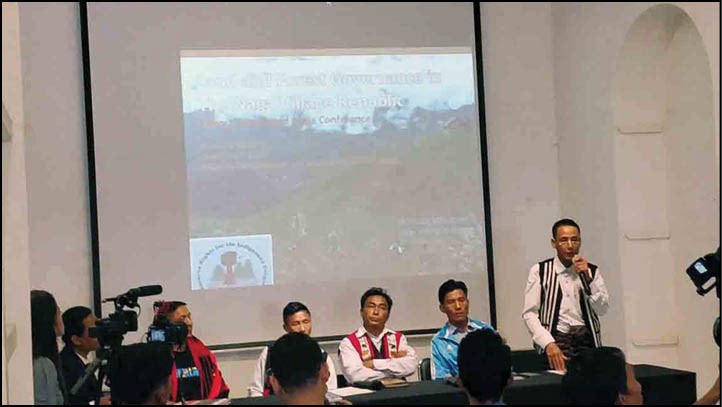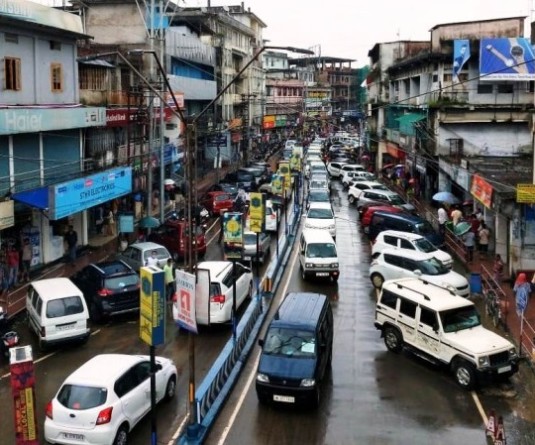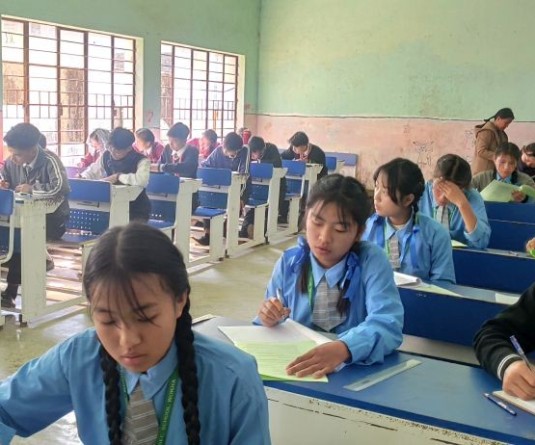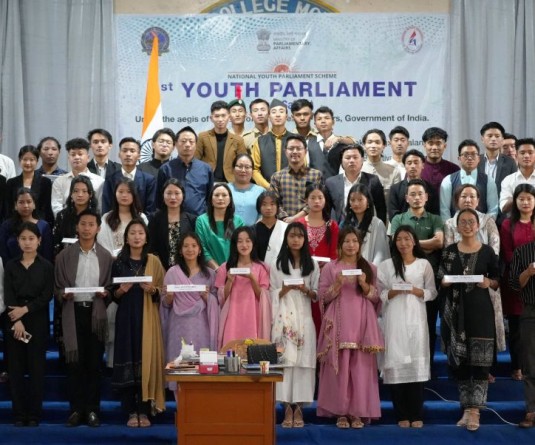Community representatives from Layshi Township in a panel discussion held in Yangon, Myanmar, on Land and Forest governance in the Naga Village Republic on February 27. (Morung Photo)

Phase-wise advocacy campaign with release of RRtIP’s report on ‘Land and Forest Governance in the Naga Village Republic’
Morung Express News
Yangon/Dimapur | February 27
Indigenous Naga communities in Myanmar have called upon the Government of Myanmar to recognize “the customary tenure system and respect their rights to own, use and govern over the lands, territories and resources” of the Naga Village Republic.
The Nagas have occupied them “since time immemorial,” declared the communities at the launch of the advocacy campaign for the “recognition of Naga territories and land and forest management rights.”
The report, titled ‘Land and Forest Governance in the Naga Village Republic’ by Resource Rights for the Indigenous People (RRtIP), was first launched in Layshi and later in Yangon on February 27.
The report, RRtIP informed in a press release today, describes the core components that comprise the Naga customary tenure system in the Naga Hills, located on the divide between northwest Myanmar and northeast India.
“The customary tenure system refers to the way that local communities govern their lands, and defines who can use and manage different resources, and provides rules for how they should be managed,” it explained.
However, the tenure security is now under threat from expansion of government administration, the establishment of forest enclosures and development projects at the whim of the central government, it added.
The RRtIP, accordingly, is planning to engage in the advocacy campaign for protection and recognition of the indigenous Naga communities rights in three phases.
Phase-wise campaign
The Layshi launch, the first phase, brought together customary leaders and community members to discuss policy recommendations and strategies for recognition of customary territories.
In the process, Layshi community leaders were familiarized about the recognition of customary tenure in India and also provided them a platform to publicly share their vision for customary tenure, including environmental protection, and policy recommendations.
Awareness of the customary tenure system and the legal impediments for Nagas and other ethnic minorities in achieving rights over their territories was also highlighted through a media campaign.
A declaration called ‘Layshi Declaration’ (Full text on Page 10) urged “all the concerned stakeholders be it government, companies, or civil society organizations wishing to operate in Naga territories to respect and recognize the rights of the indigenous peoples to land and forest, and the right to self-determination as enshrined in UNDRIP 2007.”
The second phase of the campaign in Yangon, on February 27-28, involves press conference, report launch and discussion with Naga experts from the Indian side of Naga Hills, Civil Society Organizations and Non-Governmental Organizations, as well as a week-long photography exhibition.
The objective is to raise public attention to “Indigenous peoples’ rights and the recognition of customary territories,” RRtIP noted.
The final phase would be a series of high-level meetings with parliamentarians and ministry staff in Nay Pyi Taw, the capital and seat of the Government of Myanmar, to advocate for key policy recommendations developed with customary leaders, it added.
Naga Customary Tenure System
The Naga customary tenure system is composed of localized democratic rule-based management mechanisms, which have provided for the sustainable livelihoods and conservation of resources for generations.
It is flexible and diverse, rooted in ancestral history and adapted over generations, according to RRtIP report.
“The proof that we have a way of managing the forest is that after hundreds of years there is still forest here. Thanks to our Naga system...,” the report said, quoting a Somra community leader.
The system comprises local institutions, which make decisions and enforces rules for how lands and resources can be used, a customary justice system to resolve local disputes, and an adaptive land use system which both conserves valuable resources and provides for the livelihoods of indigenous communities.
Both religion and cultural practices are expressed through the customary tenure system, and traditional practices are rooted in the land and the spirits, which inhabit it, it added.
Naga territories still maintain some of the richest biodiversity in the region due to this locally embedded governance system, the report noted.
Despite the values of the customary tenure system in protecting natural habitats and providing for the livelihoods of Naga communities, it stated that it is not recognized under the current legal framework, “putting their livelihoods at risk from land and resource grabs.”
“We have no VFV (Vacant, Fallow and Virgin) land, all of our land is being used,” stated a Somra village elder. However, under the amended VFV (2018) “communities will be considered criminal trespassers on their own customary lands as of March 11,” it added.
In this regard, the report said that the recognition of customary tenure is not only essential for the livelihoods and culture of indigenous and forest-dependent communities and protection of the environment, but also for securing a foundation for sustainable and equitable peace throughout Myanmar.
The gravity is succinctly summed up by Somra Village Chief in the report: “If we do not practice our customary system for land, our identity and our customs will be gone. Our laws are not documented, but we continue to keep them alive.”





